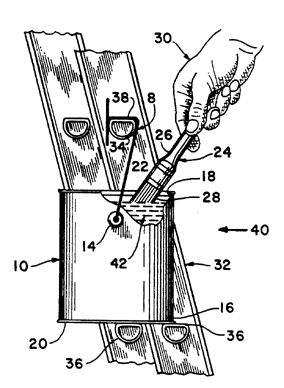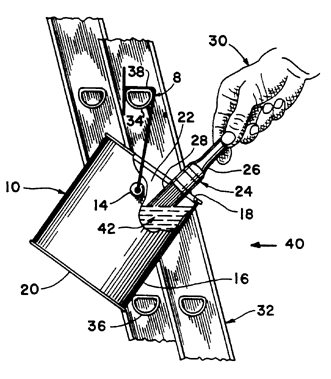THE PATENT PROCESS
WHO CAN FILE AND PROSECUTE A PATENT APPLICATION?
A formal Patent Application is filed with the United States Patent and Trademark Office in Alexandria, VA. As an inventor, you may prepare and file the application. However, this is not advisable because of the exacting rules and standards of the USPTO, and the arcane nature of patent claim drafting. Furthermore, prosecuting the patent application is a complicated procedure. Accordingly, you should retain an agent or attorney to represent you. The agent or attorney must be registered to practice before the US Patent & Trademark Office (USPTO).
WHICH IS BEST - AN ATTORNEY OR AN AGENT?
A patent attorney is registered to practice before the USPTO, and is also registered to practice law in his/her state. A patent attorney can file patent applications, sue an infringer, and represent a client in court.
A patent agent is also registered to practice before the USPTO, but is not an attorney, and is not allowed to handle copyrights, trademarks, licensing or litigation. Patent agents and attorneys have passed the same rigorous exam for admission to the patent bar. They must prove expertise in physical science, specifically a college degree in engineering or science, to take the exam. Patent agents and attorneys are equally qualified to represent an inventor.
Most attorneys go to law school right out of college. Agents typically have many years of experience in industry as engineers or scientists, before taking the bar exam. This gives the agent an edge in the practical application of engineering and scientific principles to preparing the patent application. Patent agents and patent attorneys are treated as equals by the USPTO.
INVENTION DISCLOSURE
The inventor must fully disclose all details of the invention to the patent agent. This disclosure will be held in confidence by the patent agent. This includes a written description of how the invention works, and drawings, if possible. Indicate what useful function the invention performs. Further, what advantages does the invention have over similar inventions? What problems are solved by the invention that were not solved by others? What is the name of the inventor and any co-inventors? The inventor should start by preparing an Invention Disclosure. See the Disclosure page for details.
NOVELTY SEARCH
While it is not legally required, it is strongly advisable to conduct a search of prior-art patents before filing a patent application. This is because a patent will be granted only on an invention that is new, useful, and not obvious. The search will help determine whether the invention is novel, and hence whether or not to file the application. It makes no sense to try to patent an invention that has already been patented.
Furthermore, the references uncovered in the search will guide the agent in crafting claims that are broad enough to adequately protect the invention, yet narrow enough to patently distinguish from the prior art. If the search does not find any previous patent having the features of the invention, that does not guarantee that a patent will issue. The search may have missed a relevant prior art document. See also Patent Search.
THE PATENT APPLICATION
The patent application comprises several parts: an Abstract, a Specification, one or more Claims, and usually one or more figures of a Drawing.
The specification is a detailed description of every element of the invention, how the elements interact, what materials they are made from, and how the invention solves problems that the prior art fails to solve. It must disclose to a person with ordinary skill in the technology of the invention how to make and use the invention.
The claims must “particularly point out and distinctly claim” those features that are novel with respect to the state of the art. The claims define the legal limits of the patent.
The drawing shows what the invention looks like, how the parts cooperate with one another, and how the invention works. The drawing helps to clarify the specification and claims.
The abstract is a brief overview of the invention, intended to give searchers a quick idea of what the invention entails, and what is novel.
See the Sample Patent page for details.
According to patent statute 35 USC §102(b), a person can file a patent application up to one year from the date the invention is first offered for sale or disclosed publicly. This rule is only valid here in the United States. In all foreign countries, you must file your patent application before any public disclosure. You can file a foreign application based upon a U.S. application, if no public disclosure has been made.

